Although she was feeling fine after the climb up and down at the Canopy Walkway, Cindy thought it best to rest this morning so I was Oscar’s only charge as we headed out in the morning after another fine breakfast. Our goal was the Yasuni Parrot Lick out on the Napo River. It would be the reverse of our trip into the Lodge – a canoe ride up the lake and through a channel to the take out, then a walk through the rainforest and then getting into a small motorized canoe and travelling on the Napo River in the opposite direction from our passage in. It was pretty dark in the narrow waterway as we moved through. We heard a Ferruginous Pygmy Owl – a species I first saw at the King Ranch in Texas. We also heard a Thrushlike Wren, its call/song truly sounding like a mixture of a wren and a thrush. The only picture I got was of a very spiky/spiny tree. Whether we were walking trails or going through undergrowth as we journeyed by canoe, Oscar gave clear instructions NOT to touch the plants – too many bad things could happen – insects, chemical saps, and thorns like these.

The Parrot Clay lick is touted as one of the highlights for visits to the region. The lick is on a cliff along the river and contains minerals that are used by the visiting parrots and parakeets to counteract some toxins the birds build up from the fruits they eat. My cursory check of Ebird found 20 species of parrots, parakeets and parrotlets that been reported from the area of the Lick. Although the Lick is visible only by boat and thus not super close, it is the opportunity to see the birds in numbers and somewhat still as they perch on the clay that is the great appeal. On our way to the Lick we saw several parrots/parakeets in flight barely identifiable but among those we could ID, were several Dusky Headed Parakeets and some Orange Winged Parrots. As we got closer to the lick, a Red Bellied Macaw flew by in the distance and a Chestnut Fronted Macaw followed a few minutes later. Oscar was concerned as he felt we should be seeing more. That concern was well founded as when we got to the clay lick itself, there was not a single bird – nada – nothing – nobody home. We waited a few moments, drifted downriver, motored back and waited some more. No visitors at all. It was a gray morning and it had rained earlier and Oscar felt this was the reason. The cliff was just too wet. Better luck tomorrow, but tomorrow we would be elsewhere. The photo below is what the Clay Lick is supposed to look like.

Of course it was disappointing not to see birds at the lick especially if we could have gotten pictures of the striking Macaws, but back along the river, we did get a couple of parrot photos, one perched and one a highly magnified photo of some Orange Winged Parrots in flight. I later got a truly awful distant photo of a White Eyed Parakeet, but am too embarrassed to even include it.


Actually it was going to be a day of less than wonderful photos with the dual photo nemeses of distance and gray skies much to blame in addition to the fact that many of our birds would be skulkers who buried themselves in dense foliage and were usually at most only partially visible if at all. Distance was the problem with an Amazonian Umbrellabird high in a tree back from the river. Our Roadside Hawk was closer to the river but still quite far away. I was surprised not to see more raptors on our trip. Caracaras and Vultures were by far the most numerous, hawks, eagles and falcons not so much.


I did not know it was coming, but our best birding was on an island in the middle of the Napo River that had sand, a little casual water, and mixed low shrubs and grasses, often dense and often high. It was here that we saw two of the very few shorebirds seen in Ecuador – a Greater Yellowlegs and a Collared Plover. The latter had been a successful target on our Oaxaca tip but this was a better view and photo even in very poor light. It reminds of a very rare Lesser Sand Plover – perhaps my best find in Washington almost 10 years ago.

It is no loss of pride to acknowledge that without guides and their quick eyes, good ears and especially their knowledge, my Ecuador list would be a fraction of what it became. This was less so when their were feeders and maybe even moreso on the island as we rarely saw birds in the open or moving about. Through the combination of Oscar’s talents and some playback, however, we had a pretty good list. Apologies for admittedly poor photos, but I did want to document the morning.


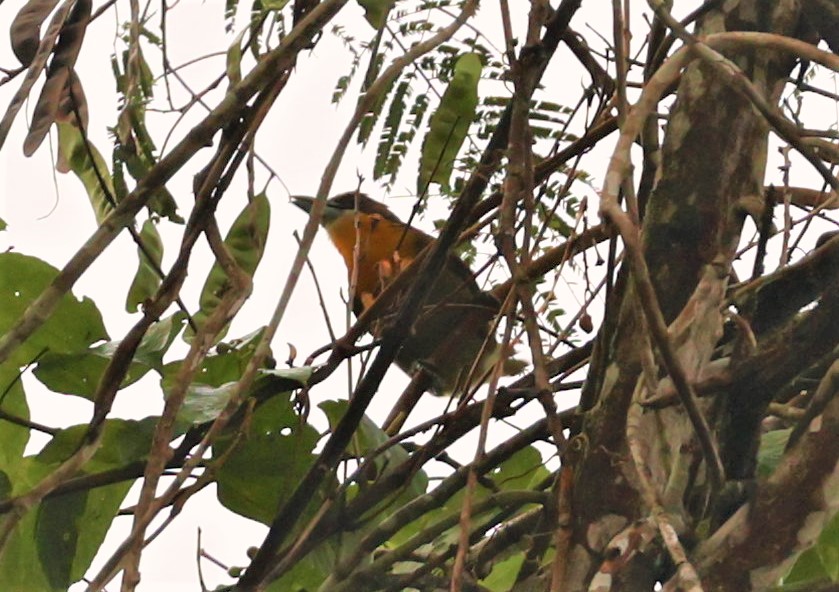




As I have written before, I did not do well with the various ant type birds. In my head they were birds only to be found on the forest floor in the mountains and in the Amazon. I did not expect them in scrub brush like on this island, but we had several species, one buried even further than the previous one. We had Black Faced, Black and White and White Shouldered Antbirds well as Castelnau’s and Barred Antshrikes. I am including this photo of what I believe is the Castelnau’s Antshrike BUT without perfect confidence and it may well be the White Sided Antbird and it was the best of 25 attempts to get a photo through the branches and foliage whatever it is/

We found two hummingbirds on the island – Olive Spotted Hummingbird and Black Throated Hermit and I was able to get a good photo of the former – and both were new for Ecuador and for my world list. By far the toughest photo to get – and “photo” may be a significant overstatement – was of a Gray Breasted Crake – barely visible but identifiable and any photo of a Crake is unexpected.

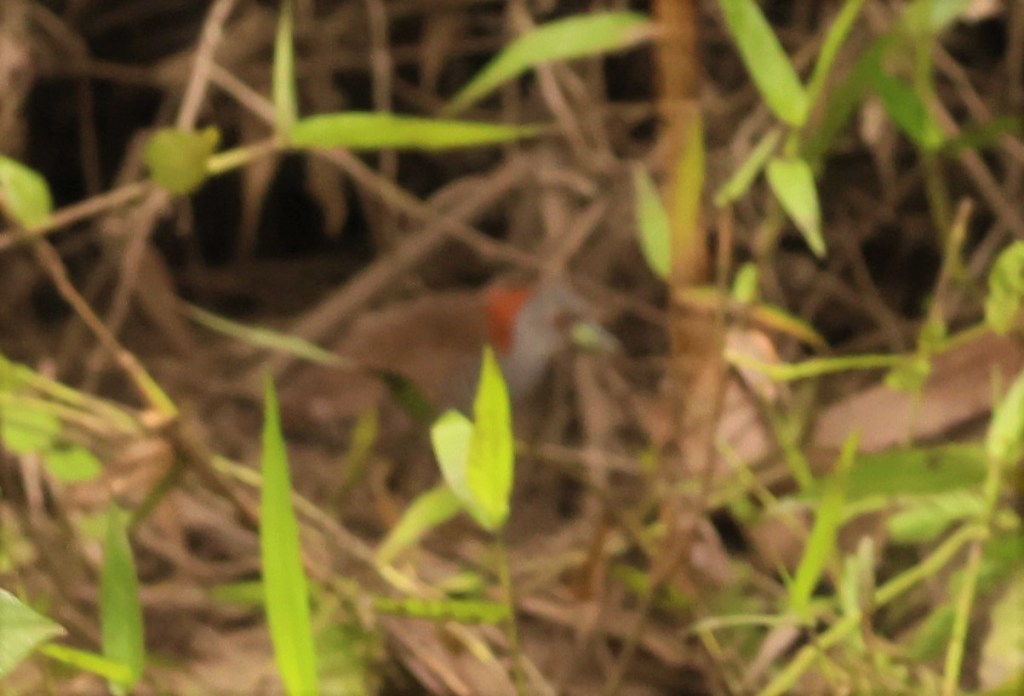
The visit to the island was both frustrating and rewarding as we had to work hard for every species and got few clear looks and fewer photos, but we added a lot of new birds and it was very cool having the island to ourselves and to bushwhack through tall grasses and brush to chase our quarry. Back on the water we continued to see new species and I got some photos despite the distances. Not the best photos but two that I was happy to get were of Swallow Winged Puffbird and Bare Necked Fruitcrow.


We saw both Smooth Billed and Greater Anis and added a Speckled Chachalaca in trees along the riverbank and several Fork Tailed Palm Swifts flew overhead. A Crane Hawk perched above us and I was finally able to get a photo of a Yellow Headed Caracara.





A Snowy Egret was close to the dock where we left the motorized canoe and a Boat Billed Heron flew past us. We hiked back to the canoe and Oscar paddled us again through the small channel. Part way through the channel we saw a Capped Heron perched in front of us. I find this heron especially beautiful and grabbed a distant photo. Unfortunately it flew off before we could get closer. Later we had a Striated Heron and then towards the end of the channel a Limpkin was perched in the open posing and completing our collection of waders, a Rufescent Tiger Heron made an appearance.





Although we missed out on a parrot display at the Clay Lick, it had been a great morning with new birds and something akin to the thrill of the hunt on the Island. Oscar had proved yet again to be good company and a great guide. I joined up with Cindy and had another scrumptious lunch. We had a short siesta and then rejoined Oscar for another canoe excursion – this time along different channels out from the lake. We hoped to find some River Otters that had been seen by others the previous day and coming back towards duck, perhaps there would be a Caiman.
It poured during our rest and completely stopped by the time we were back in the canoe with Oscar. We were fortunate weather wise throughout our trip as there was heavy rain a couple of nights and this afternoon as we rested but we never got caught in the rain itself – just the mud that followed sometimes. A word about mud. There would be more at later stops but it really was not too bad at Sacha and we were prepared for it in any event as the Lodge provided high quality rubber boots for everyone. And a word about bugs. There were lots of ants although none that were problematic and there were the occasional flies or mosquito but truly just a few and again never a problem. We did see a single Bullet Ant and kept clear as they deliver a very painful bite. I never felt it happen but somehow I did get a few bites, always in areas covered by clothing, not painful but irritations that lasted several days. Interestingly I have never had insect problems on any of my trips – Africa, Brazil, Peru, Belize, Costa Rica, Trinidad, India – nowhere. I even escaped serious bug issues in Alaska and Maine – but I cannot say the same for North Carolina – chiggers, mosquitos, ticks, gnats and flies – no thank you!!

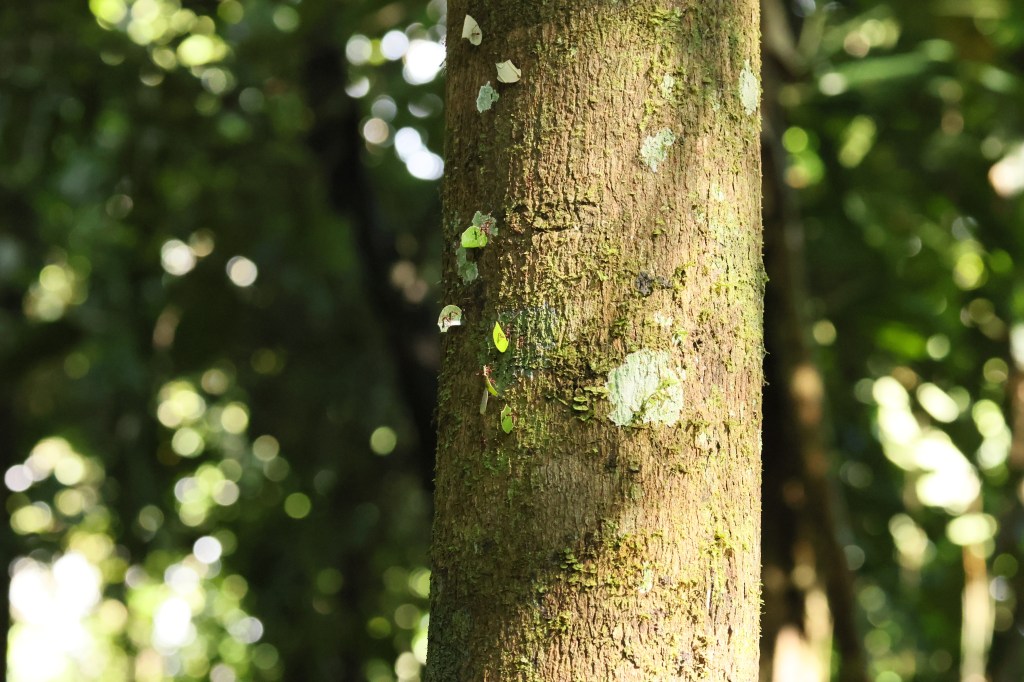
It was a little humid after the rain but not too hot, no wind and clear skies. Back in the canoe and back to the birds. Observations were from the boat and photo ops only so-so but we had nice birds. Both Ringed and American Pygmy Kingfishers zipped by. A Black Fronted Nunbird perched overhead not far from a Chestnut Eared Aracari. We had a lovely Lineated Woodpecker and both Elegant and Striped Woodcreepers heard and seen. Similar species were both Dark Breasted and White Bellied Spinetail. An Orange Crowned Manakin played hide and seek and posed briefly in the open. Crested Oropendolas flew by and we saw Oropendola nests hanging from a distant tree beautiful in their symmetry and amazing to think about how they were constructed.



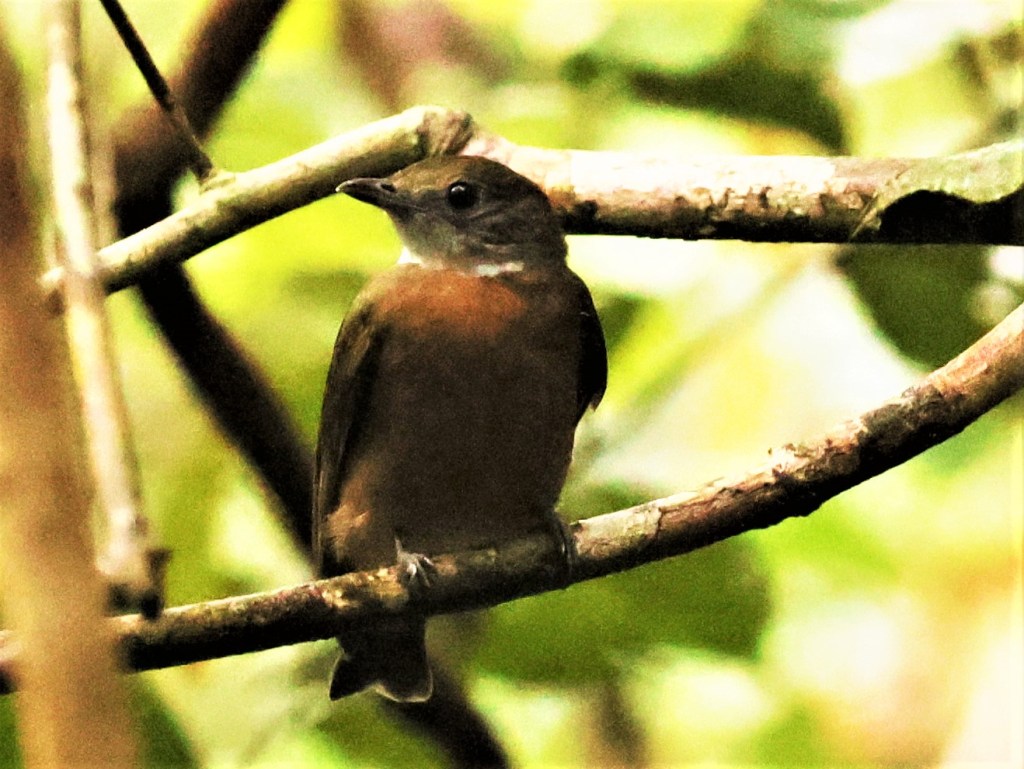

It was a good afternoon for flycatchers as well with both Great and Lesser Kiskadees, Slender Footed Tyrannulet, Fuscous and Gray Capped Flycatchers, Drab Water Tyrant and Cinnamon Attila.

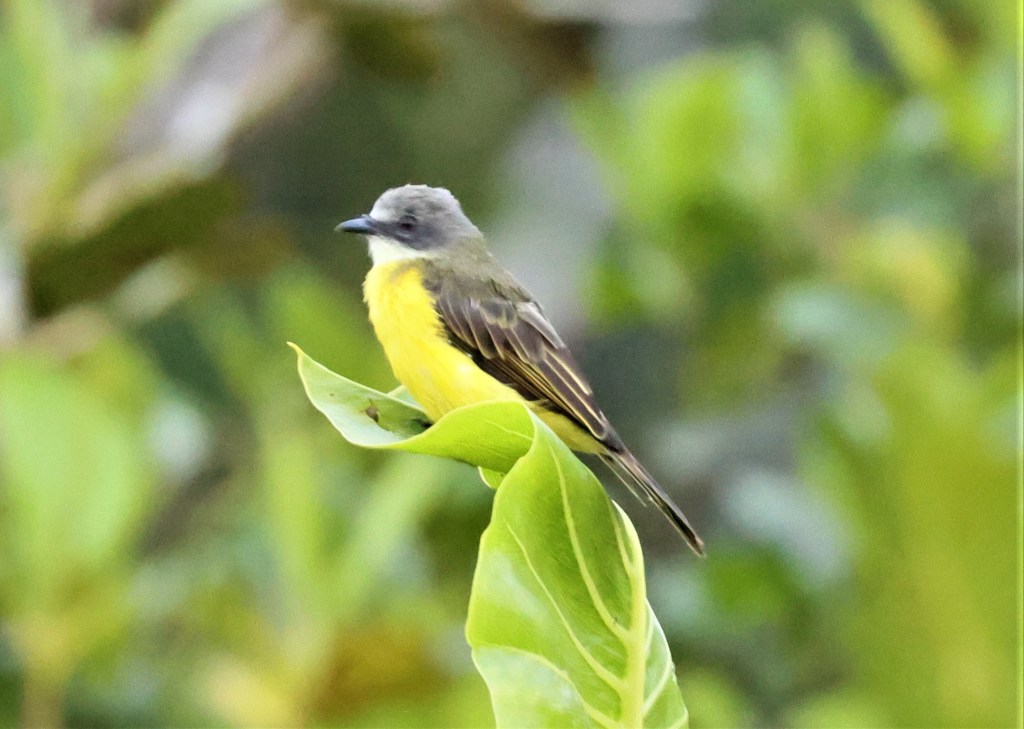
We saw both Ringed and Green and Rufous Kingfishers. One flew so close by we thought it would hit us. Only one was perched – long enough for a quick picture.
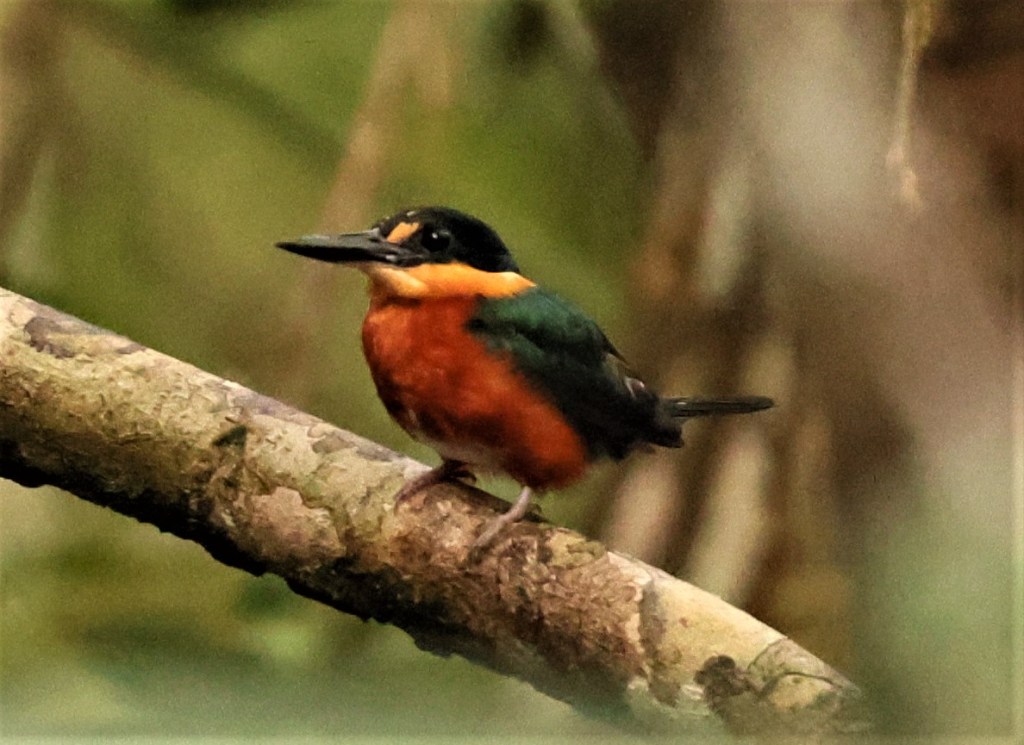
There were many missed photos as a canoe is not always the best platform for photography. One was of a Magpie Tanager, another striking tanager, one that I had seen in both Brazil and Peru and don’t recall if I have photos from those encounters. A miss I cannot believe is of the Crested Oropendolas as they were common and visible. Looking through my photos, I just don’t see one. Probably thought there would be a better shot so why bother. I had seen them in Peru, Brazil and a million years ago in Trinidad. Bet I could find a photo in some old files. As it was getting on towards dusk, we were back in the lake skirting the edges looking for a Caiman. Another canoe seemed to stopped and the folks aboard were looking down in the water at something. We paddled over and saw a Caiman that was in the shallows – all 3 feet of him/her. Hardly the terrifying monster of the dark waters as it is portrayed. We know there are bigger ones there and had we gone out on a night trip perhaps we would have seen one. I had seen some very large ones in Belize and Brazil.

We were back in time for doing our list, having a drink and enjoying a beautiful sunset and then another excellent dinner. The next day would be our last at Sacha Lodge and we would visit the Kapok Tower – even taller than the Canopy Walkway. Our count for the day was 83 species with 47 new for Ecuador and 18 lifers. I still needed 102 to get to 3000. We would need some really good days for that.
